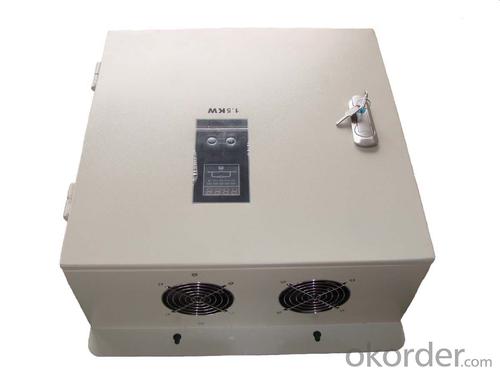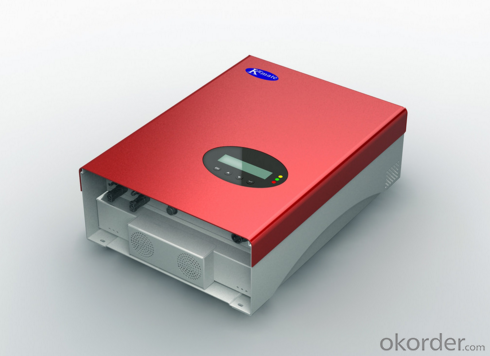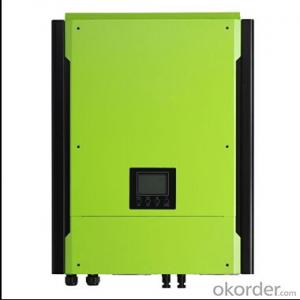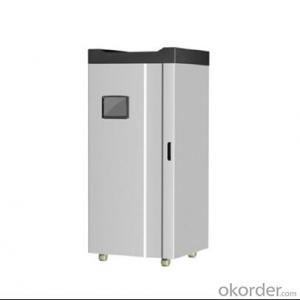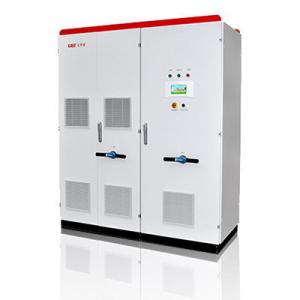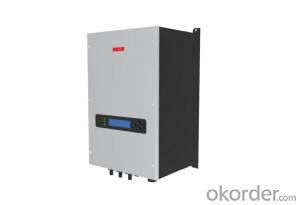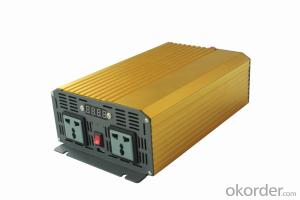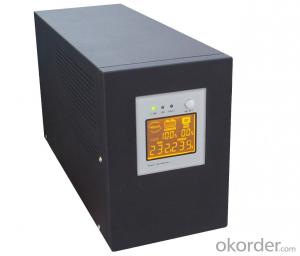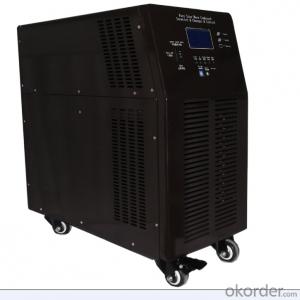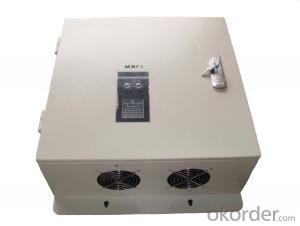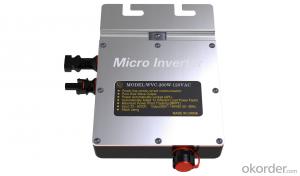Invt Solar Inverter - Single Phase 1kW Inverter Made in China
- Loading Port:
- Shanghai
- Payment Terms:
- TT OR LC
- Min Order Qty:
- 0 watt
- Supply Capability:
- 10000 watt/month
OKorder Service Pledge
OKorder Financial Service
You Might Also Like
Description of Single Phase1K Inverter
Single Phase1K Inverter made in China
Features of Single Phase1K Inverter
High MPPT accuracy(>99.9%)
Wide DC input range (60~300 Vdc), compatible with different module
Easy to wire, install and operate
IP65 design, suitable for indoor and outdoor installation
10 years warranty(5~25 years optional)
Technical Data of Single Phase1K Inverter
| Type | Omniksol-1k-TL-M |
| Input(DC) | |
| Max.PV Power | 1.25kW |
| Max,DC Voltage | 400V |
| Operating MPPT Voltage Range | 60-300V |
| MPPT Voltage Range at Nominal Power | 100-300V |
| Start up DC Voltage | 70V |
| Turn off DC Voltage | 50V |
| Max, DC Current | 10A |
| Max, Short Cicuit Current for each MPPT | 12A |
| Number of MPP trackers | 1 |
| Number of DC Connection for each MPPT | 1 |
| DC Connection Type | MC4 connector |
| Output(AC) | |
| Max,AC Apparent Power | 1000VA |
| Nominal AC Power (cos phi = 1) | 1000W |
| Nominal Grid Voltage | 220V/230V/240V |
| Nominal Grid Frequency | 50Hz/60Hz |
| Max, AC Current | 5.0A |
| Grid Voltage Range** | 185-276V |
| Grid Frequency Range** | 45-55Hz/55-65Hz |
| Power Factor | >0.99 |
| Total Harmonic Distortion(THD) | <3% |
| Feed in Starting Power | 30W |
| Night time Power Consumption | <1W |
| Standby Consumption | 6W |
| AC Connection Type | Plug-in connertor |
| Efficiency | |
| Max,Efficiency | 95.5% |
| Euro Efficiency | 94.2% |
| MPPT Efficiency | 99.9% |
| Safety and Protection | |
| DC Insulation Monitoring | Yes |
| DC Switch | Optional |
| Residual Current Monitoring Unit (RCMU) | Integrated |
| Grid Monitoring with Anti-islanding | Yes |
| Protection Class | Ⅰ(According to IEC 62103) |
| Overvoltage Category | PV Ⅱ/ Mains Ⅲ(According to IEC 62109-1) |
| Reference Standard | |
| Safety Standard | EN 62109, AS/NZS 3100 |
| EMC Standard | EN 6100-6-1, EN 6100-6-2, EN 6100-6-3 EN 6100-6-4, EN 6100-3-2, EN 6100-3-3 |
| Grid Standard | VDE-AR-N4105. VDE-0126-1-1,G83/1,EN 50438,RD1699,CEI 0-21, AS4777,C10/C11 |
| Physical Structure | |
| Dimensions | 210x297x90mm |
| Weight | 5.5kg |
| Environmental Protection Rating | IP 65 (According to IEC 60529) |
| Cooling Concept | Natural convection |
| Mounting Information | Wall bracket |
| General Data | |
| Operating Temperature Range | -25℃ to +60℃(derating above 45℃) |
| Relative Humidity | 0% to 98%, no condensation |
| Max. Altitude (above sea level) | 2000m |
| Noise Type | <45dB |
| Isolation Type | Transformerless |
| Display | 2LED Backlight 16*2 Character LCD |
| Data Communication | RS485(WiFi, GRPS optional) |
| Computer Communication | RS232 as option |
| Standard Warranty | 10 Years (5-25 years optional) |
IMages of Single Phase1K Inverter

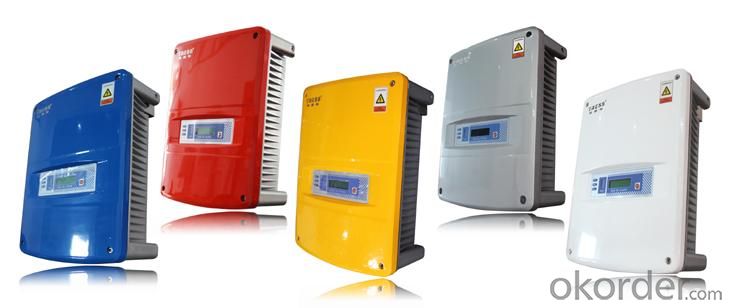
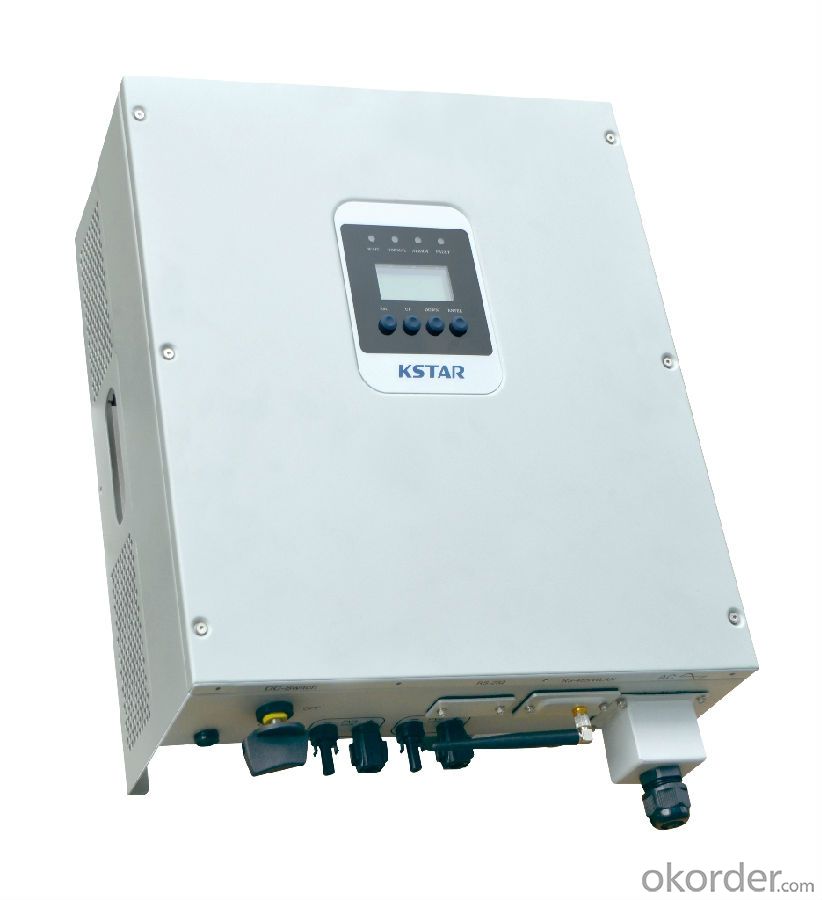
FAQ
Q: Do you have the CE, TUV, UL Certification?
A: We’ve already passed all the tests, and any certificate is available.
Q: Have you ever sold your products to companies in my country?
A: Of course, we have customers in all general PV markets, but I think we should expand our market share along with the market growth.
Q: When did your company set up? You are a new company, how can I believe your quality?
A: We entered into Solar PV industry in 2005, now we have several plants in manufacturing of a-Si and c-Si panels, and our capacity is 220MW per year. Till now we have already passed all the tests by authorized laboratories, e.g. TUV, CE, UL.
Q: Can you help us install the module if we cooperate with you?
A: We haven’t entered into installation sector, but we have the plan in near future.
Q: How do you pack your products?
A: We have rich experience on how to pack the panels to make sure the safety on shipment when it arrives at the destination.
Q: Can you do OEM for us?
A: Yes, we can.
Q: Can we visit your factory?
A: Surely, I will arrange the trip basing on your business schedule.
- Q: Are there any safety concerns associated with solar inverters?
- Yes, there are some safety concerns associated with solar inverters. One of the main concerns is the risk of electrical shock or fire due to faulty installation or maintenance. Additionally, there can be potential hazards from exposure to high voltage DC electricity during installation or repairs. It is important to follow proper installation procedures and adhere to safety guidelines to mitigate these risks.
- Q: What is the maximum current output of a solar inverter?
- The maximum current output of a solar inverter depends on its size and specifications. In general, smaller residential inverters may have a maximum output current of around 8-12 amps, while larger commercial or utility-scale inverters can go up to several hundred amps. It is important to select an inverter that matches the specific requirements of the solar PV system to ensure optimal performance and safety.
- Q: How does a solar inverter protect against lightning strikes?
- A solar inverter typically protects against lightning strikes by incorporating surge protection devices and grounding systems. These features help to divert the excess energy caused by a lightning strike away from the sensitive electronic components of the inverter, preventing damage and potential electrical hazards.
- Q: How does a solar inverter handle fluctuations in solar panel output due to temperature changes?
- A solar inverter handles fluctuations in solar panel output due to temperature changes by incorporating a maximum power point tracking (MPPT) algorithm. This algorithm continuously adjusts the voltage and current levels to optimize the power output from the solar panels, compensating for any temperature-related variations. By dynamically adapting to temperature changes, the solar inverter ensures that the maximum power is extracted from the panels and efficiently converted into usable electricity.
- Q: How does a solar inverter handle variations in solar panel cleanliness?
- A solar inverter does not directly handle variations in solar panel cleanliness. However, a decrease in solar panel cleanliness can lead to a decrease in the overall energy output of the solar system. This reduced energy input is then processed by the solar inverter, which converts it into usable electricity. Therefore, while a solar inverter itself does not handle the cleanliness of solar panels, it indirectly adapts to variations by adjusting the energy conversion process based on the input it receives from the panels.
- Q: What is the role of a solar inverter in protecting the electrical grid?
- The role of a solar inverter in protecting the electrical grid is to convert the direct current (DC) electricity produced by solar panels into alternating current (AC) electricity that is compatible with the grid. It ensures that the solar power generated is synchronized with the grid's voltage and frequency, allowing for seamless integration and preventing any disruptions or voltage fluctuations that could potentially harm the grid. Additionally, solar inverters have built-in safety mechanisms such as anti-islanding protection, which disconnects the solar system from the grid during a power outage, ensuring the safety of utility workers who may be working on the grid. Overall, solar inverters play a crucial role in ensuring the stability, reliability, and safety of the electrical grid when incorporating solar energy.
- Q: Can a solar inverter be used with a solar-powered emergency lighting system?
- Yes, a solar inverter can be used with a solar-powered emergency lighting system. The solar inverter is responsible for converting the direct current (DC) generated by the solar panels into alternating current (AC) which is required to power the emergency lighting system. This allows the system to store and utilize the solar energy effectively, ensuring uninterrupted power supply during emergencies.
- Q: What is the role of an anti-islanding feature in a solar inverter?
- The role of an anti-islanding feature in a solar inverter is to ensure the safety of utility workers by preventing the solar system from continuing to generate power during a grid outage. It detects when the grid goes down and immediately disconnects the solar system from the grid, preventing any potential harm or damage that could occur if power is still being fed into the grid.
- Q: How does a solar inverter affect the overall efficiency of a solar system?
- A solar inverter plays a crucial role in converting the direct current (DC) produced by solar panels into alternating current (AC) that can be used to power household appliances and feed into the electrical grid. It directly affects the overall efficiency of a solar system by maximizing the power output, reducing energy losses during conversion, and ensuring optimal functioning of the system. A high-quality solar inverter can significantly improve the efficiency of a solar system, resulting in increased energy generation and cost savings.
- Q: Can a solar inverter be used with solar-powered data centers?
- Yes, a solar inverter can be used with solar-powered data centers. In fact, solar inverters are essential components in solar power systems as they convert the direct current (DC) generated by the solar panels into alternating current (AC) which is then used to power the data center's equipment. The solar inverter ensures efficient and reliable utilization of solar energy in data centers.
Send your message to us
Invt Solar Inverter - Single Phase 1kW Inverter Made in China
- Loading Port:
- Shanghai
- Payment Terms:
- TT OR LC
- Min Order Qty:
- 0 watt
- Supply Capability:
- 10000 watt/month
OKorder Service Pledge
OKorder Financial Service
Similar products
Hot products
Hot Searches
Related keywords


